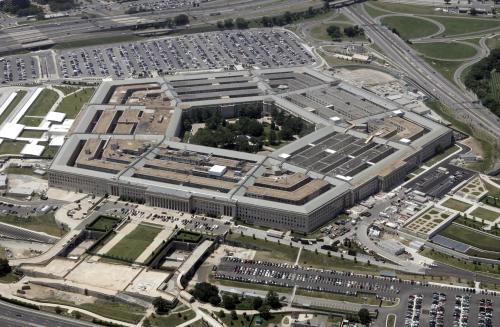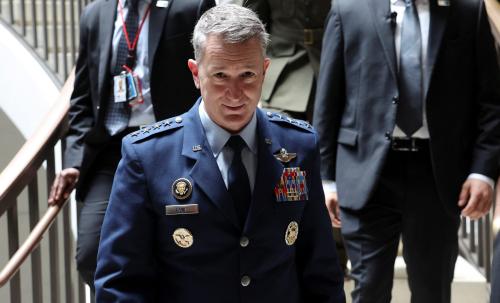The Vitals
There’s a fair amount of
disagreement over whether the United States spends too much or too little on
its defense budget, partly due to people on both sides of the debate using
oversimplified statistics to support their position. The defense budget is
large relative to budgets of other countries and other federal agencies, yet
still modest as a fraction of the nation’s economy compared to Cold War-era
levels. To truly make sense of spending, we must look beyond the size of the
defense budget and consider what that money is being spent on.
-
While the current U.S. military budget exceeds China’s military spending by 3-to-1 and Russia’s by more than 10-to-1, we must look beyond the size of the defense budget alone.
-
The Trump administration’s projected defense spending for 2020 is just over 15% of all federal government spending and about 3.2% of GDP. National defense spending averaged 5-10% of GDP during the Cold War decades.
A Closer Look
Does the United States spend too much, or too little, on defense? Why does its current military budget, even excluding costs for Iraq and Afghanistan, exceed the Cold War average in real-dollar terms, and exceed the budgets of China by 3-to-1 and of Russia by more than 10-to-1? Yet why do reputable and serious foreign policy thinkers often argue, that the budget needs to keep increasing faster than inflation in the years to come? Regardless of whether it is excessive, how can statements about the defense budget be evaluated?
First, it may be helpful to put
these issues in a budgetary context.
- In 2020, U.S. federal spending was projected by the Trump administration to reach about $4.7 trillion, out of an economy expected to reach $22.4 trillion in size. State and local expenditures will constitute roughly another $3 trillion of gross domestic product (GDP). Together, these figures mean that all government spending in the United States adds up to almost 35% of GDP.
- The Trump administration’s requested and projected national defense proposal for 2020 of some $750 billion in budget authority, and $726 billion in projected outlays, is just over 15% of total federal government spending, 10% of all types of U.S. government spending combined, and about 3.2% of GDP. This U.S. national defense budget does not capture all major government activities that in fact do influence American security. It includes neither diplomacy, nor foreign assistance, nor Department of Homeland Security operations, nor the Department of Veterans Affairs. It does, however, include the Department of Defense, the intelligence community, and the Department of Energy’s nuclear-weapons-related activities.
Next a word on strategic context.
One of the reasons the defense
budget is so large is that we expect our military to be able to do many things
at once. The 2018 National Defense Strategy envisions
being able to conduct several missions simultaneously: maintain a strong nuclear deterrent; protect
the homeland from attack by missiles, aircraft, terrorists, and others; defeat
China or Russia in conventional combat, and deter North Korea while doing so;
and sustain momentum in the “war on terror.” This is a much more ambitious
agenda than the United States had during most of the 30 years since the Berlin
Wall fell, when its main strategic priorities were to be ready for possible
two-front war against the likes of Iraq and North Korea.
So now we are back to the big
question of how much is enough. Answers to this question are often badly
oversimplified in the American political debate, often by those with a
pre-determined agenda of either making the defense budget seem high or low. Many
of the common arguments voiced by proponents or critics of the defense budget
may be factually correct, but they can often be badly misleading—and indeed,
they often point in opposite policy directions, making them poor guides to
decisionmakers.
For example, many who wish to
defend the magnitude of Pentagon spending often point out that in recent
decades its share of the nation’s economy is modest by historical standards. During
the 1960s, national defense spending averaged 8 to 9% of GDP, including war
costs and nuclear weapons costs. In the 1970s it began at around 8% and
declined to just under 5% of GDP. During the Reagan buildup of the 1980s it
reached 6% of GDP before declining somewhat as the Cold War ended. In the 1990s
it started at roughly 5 percent and declined to about 3%. During the first term
of George W. Bush, the figure reached 4.0 percent by 2005 and stayed there
through 2007; it grew toward 4.5% by 2009. It gradually declined over most of
the Obama years but has ticked upward slightly in the early Trump years, to
just over 3% of GDP, again including war costs and Department of Energy nuclear
weapons costs (but not the spending of the Department of Veterans Affairs of
more than $200 billion itself). Seen in this light, current levels seem
moderate.
By contrast, those who criticize
the Pentagon budget often note that it constitutes more than one-third of all
global military spending, and three times that of the number two global
military power, China. Or they note that estimated 2020 national security
discretionary spending of more than $700 billion will exceed the Cold War
inflation-adjusted spending average of around $515 billion, expressed in 2020
dollars. Or they note that it dwarfs the size of America’s diplomatic and
foreign assistance accounts, or homeland security figures (each
in the rough vicinity of $50 billion a year at present).
These observations are all
simultaneously true and can be used to argue for more defense spending or for
less. Thus, they are inconclusive in the aggregate. The U.S. defense budget is
and will remain large relative to budgets of other countries, other federal
agencies, and even other periods in American history. Yet at the same time it
is modest as a fraction of the nation’s economy, at least in comparison with
the Cold War era. As such, while informative at one level, these observations
are of little ultimate utility in framing defense policy choices for the
future. We must look deeper.
The challenge for those who seek to
make sense of the defense budget is to look more closely at how defense dollars
are spent. Only then can we decide if the budget is excessive, or insufficient.
The challenge is identifying missions that are not needed, on the one hand, or
under-resourced on the other; weapons that are too pricey or redundant versus
those that may be imperative and even neglected under current plans; defense
business practices that may be inefficient; and so forth. That is a complicated
process. So beware of simple statements about the defense budget. Depending on who is doing the talking, one
could imagine an American presidential candidate proposing anything from a $600
billion a year defense budget for 2021 and beyond to something closer to $800
billion. Even by Washington and overall U.S. standards, that potential $200
billion discrepancy is real money—and translates into big differences in
overall military capability.
The Brookings Institution is committed to quality, independence, and impact.
We are supported by a diverse array of funders. In line with our values and policies, each Brookings publication represents the sole views of its author(s).






Commentary
Is US defense spending too high, too low, or just right?
October 15, 2019